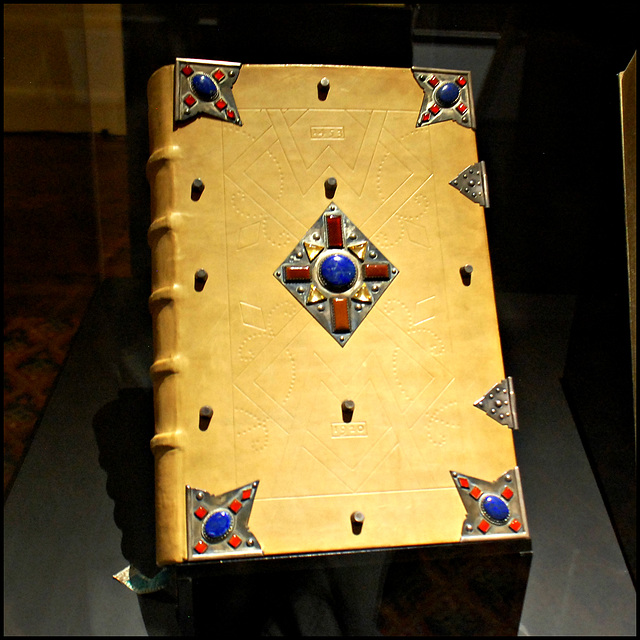Library of Alexandria
Figure 7.8 Arc of Instablity
Перестро́йка / гла́сность ~ Perestroika / Glasnos…
AN OCEAN OF AIR*
Van Allen Belt
Carl Woese compared the genetic sequence of many d…
What the plants have to 'say'
Queen Isabella & Columbus
Lawrence of Arabia
A Neanderthal who's been given a shave and a new s…
Carpenter Hall
Codex
Roses
Sugars
THERE IS ALWAYS.....
Velocipede
Sancho Panza kept on drinking......!
Chickadee
Lawn
Wandering North Magnetic Pole
Arthur Schopenhauer
Charles Robert Darwin
Jung
Leo Semionovich Vygotsky
Roger Walcott Sperry
Ivo Kohler
Buddha's smile & Cognitive Science
Alex Rosenberg
THE GAP
Have a nice evening
Darwin
Reductionism
Memories
Time
Emile Zatopek
Autumn Leaves
Man and the Mind......
The Scream
THE INFIDEL AND THE PROFESSOR
Evening Sky
Homunculus
At Walden June 2008 (Replica)
Thomas Hobbes 1588-1679
^^
Time
Sun dial
^^
Hanumanth Gundi falls / Waterfall effect
No 'U' turn
Giordani Bruno
Soliloquy of a Stone
Outrigger
‘Fors’ ~ Good luck
Nostalgia
Chemical Clock
Peripatetikos / Walking
Skyhook
Flowers
Newton
Grandfather clock
Figure 2.3. Farmers and fighters: the lucky latit…
If the chicken could fly.....
The Screen, light & electricity as writing medium
Meadow
Talantograph
Immigrants
The Fagile Species
Transcriptase
"I, pencil"
Retrodict
SUN DIAL
Immigrants
Daguerreotype
No Newton for a Blade of grass
Colors of the mountains
Copernicus
Lowenmensch
Panta Rhei ~ All flows
QWERTY / Panda's Thumb
Contingency
ON THE BEACH
Sycamore
Ironism
Final vocabulary
Morris Dance
Eye Like Yours
Reading -- thinking, feeling, anticipating.....
Succession of persons
Entropy / Negative entropy
~ Reading ~
The Future of Life
Box
Procrustes
THE BED OF PROCRUSTES
Einstein, his wife & Charlie Chaplin
K 127
What next?
Man is what he eats
Conatus~ Latin for "effort; endeavor; impulse, inc…
On Reading & Writing -- Sartre quote
Sartre on reading and writing
Jean-Paul Sartre VS. Mereleau-Ponty
Flow of river/time
Music - Chills/Opioids!
Space *
From the Active Body to the Mind
Brain -- a chemical soup
Sycamore / Pane
Asian Brown Cl0ud
Anthropocene Sky *
Perceiving a House *
Table 12.1 ~ Inflation
See also...
Keywords
Authorizations, license
-
Visible by: Everyone -
All rights reserved
-
125 visits
Gutenberg Bible


A spectacular Gutenberg Bible reproduction of Die Zweiudevierzigzellge Bible, Johannes Gutenberg, Mainz 1450-1453 facsimile; Leipzig, Insel-verlag 1913-1914 - 2 volumes
On display a bejeweled facsimile reprint of Gutenberg's 42 lines Latin Bible, the first book printed with movable metal type. The binding is by Emanuel Steiner of Basel and was copies from an original in the Standisch Landesbibliothek at Fulda, Germany. The leather uses in clasps and corners etc., are chased silver and the stones are blue malachite and onyx.
On display a bejeweled facsimile reprint of Gutenberg's 42 lines Latin Bible, the first book printed with movable metal type. The binding is by Emanuel Steiner of Basel and was copies from an original in the Standisch Landesbibliothek at Fulda, Germany. The leather uses in clasps and corners etc., are chased silver and the stones are blue malachite and onyx.
Jean has particularly liked this photo
- Keyboard shortcuts:
Jump to top
RSS feed- Latest comments - Subscribe to the comment feeds of this photo
- ipernity © 2007-2024
- Help & Contact
|
Club news
|
About ipernity
|
History |
ipernity Club & Prices |
Guide of good conduct
Donate | Group guidelines | Privacy policy | Terms of use | Statutes | In memoria -
Facebook
Twitter

The Gutenberg Bible was an immediate sensation. When Piccolomini visited the Frankfurt Fair in 1454 he was able to view proof sheets but not a complete copy because the whole edition was already sold out. The astonishingly high rate of survival -- of an estimated print run of 180 copies a full fifty can be identified today -- suggest that from the very beginning this was a book that was cherished and treated with awe. Most of the initial buyers were monasteries and ecclesiastical customers in the immediate viscinity of Mainz, though Piccolomini dispatched samples to the Emperor for his inspection. Institutional customers would have had access to the calligraphical expertise which added the rich decorative illumination that adorns most of the surviving copies. They would also have been able to afford the very high cost. Customers paid around 20 gulden for a paper copy of Gutenberg Bible and 50 for a copy on vellum. By way o comparisons, a stone-built house in Mainz would have cost between 80 and 100 gulden; a master craftsman would have earned between 20 and 30 gulden a year. ~ Page 29
“The Gutenberg bible is what a user around 1455 would expect a book to look like. If you want to sell something, you need to make something that your customer will recognize and understand. So Gutenberg produced something that looked just like a traditional book. One of the ways you can tell that it is printed is by looking closely at the ink, which has a very shiny surface. When you write a book by hand, you sue a water-based ink. You put your pen into it and the ink runs off. That does not work if you are printing, because the ink will also run off the press and spoil the page. So one of Gutenberg’s inventions was a ink which was not ink. What we call printer’s ink is actually a varnish, which means that the sticks to its surface and does not run, and that means that it looks different. ~ Page 286
Sign-in to write a comment.